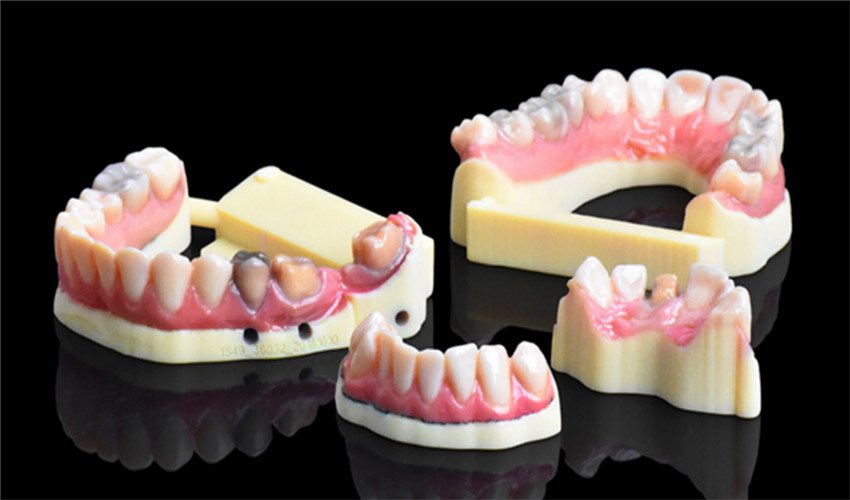Additive Manufacturing for Medicine and Healthcare
Healthcare Industry is one of the major industries where 3D Printing has lot of advantages over other forms of manufacturing. 3D Printing can be leveraged to produce custom, lightweight, high strength geometries with speed and accuracy. AM allows for creating complex shapes that are otherwise not possible to make with traditional methods. Let’s see the major areas where additive manufacturing is having significant contribution.
Dentistry
Dentistry and Orthodontics is currently the largest market for additive manufactured bridges, crowns, braces and dentures. Patient data is scanned using dedicated oral scanners that can be inserted into the mouth and digital copy of the geometry can be obtained. This point data is translated into 3D data using dedicated processing software and the finished CAD file can then be used for 3D printing dentures and orthodontics.

Anatomical Models
For individual treatments, doctors and clinicians need to see geometrically accurate model of the patient like a bone or an organ or tumor or a limb. Thanks to advancements in medical imagery, we can get full color and accurate scan data down to vascular level. These detailed scan data can be used to 3D print color realistic models for analysis. Doctors can then plan and strategize and make decisions such as positions for incisions. Anatomical models are also used to train medical students and surgeons on best practices to follow.
General Tools
Clamps, grips and other auxiliary tools required as per the anatomy of the patient can be manufactured with additive techniques for aiding in surgery, treatment and examinations.
Prosthetics and Orthotics
Prosthetics is another great area where additive manufacturing plays a key role. 3D Printing can be used to manufacture prosthetics of excellent size, shape and fit. Prosthetics can either be internal like a hip joint or external like a missing limb. Before committing for actual implant on the patient, doctors can make use of CT scanned data to accurately 3D print the bone structure and then choose a custom 3D printed implant that is specifically designed for that patient.